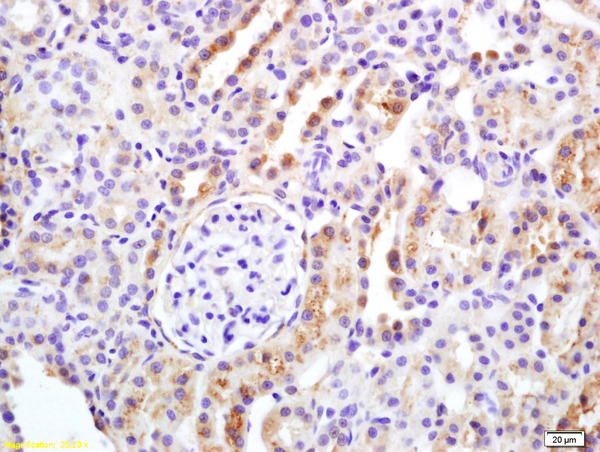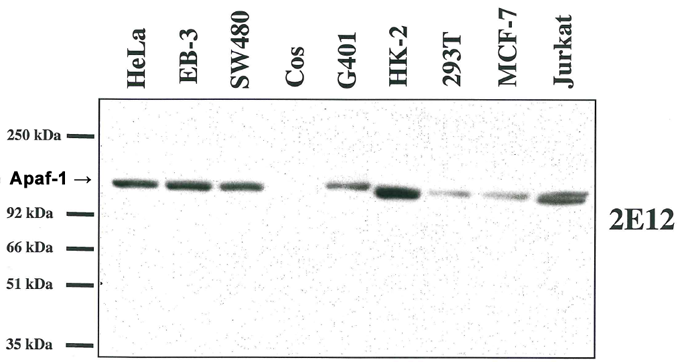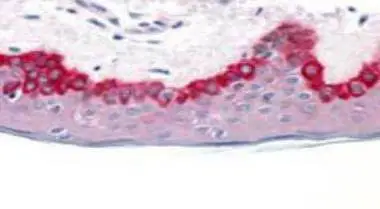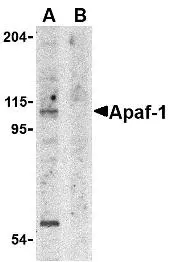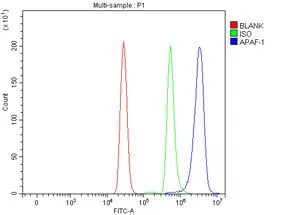
FACS analysis of U937 cells using GTX04330 APAF1 antibody. Blue : Primary antibody Green : Isotype control Red : Unlabelled cell Antibody amount : 1microg/1x10? cells
APAF1 antibody
GTX04330
ApplicationsFlow Cytometry, Western Blot, ELISA
Product group Antibodies
TargetAPAF1
Overview
- SupplierGeneTex
- Product NameAPAF1 antibody
- Delivery Days Customer9
- Application Supplier NoteWB: 0.25-0.5 microg/ml. FACS: 1-3 microg/1x106 cells. ELISA: 0.1-0.5 microg/ml. *Optimal dilutions/concentrations should be determined by the researcher.Not tested in other applications.
- ApplicationsFlow Cytometry, Western Blot, ELISA
- CertificationResearch Use Only
- ClonalityPolyclonal
- Concentration0.5 mg/ml
- ConjugateUnconjugated
- Gene ID317
- Target nameAPAF1
- Target descriptionapoptotic peptidase activating factor 1
- Target synonymsAPAF-1, CED4, apoptotic protease-activating factor 1
- HostRabbit
- IsotypeIgG
- Protein IDO14727
- Protein NameApoptotic protease-activating factor 1
- Scientific DescriptionThis gene encodes a cytoplasmic protein that initiates apoptosis. This protein contains several copies of the WD-40 domain, a caspase recruitment domain (CARD), and an ATPase domain (NB-ARC). Upon binding cytochrome c and dATP, this protein forms an oligomeric apoptosome. The apoptosome binds and cleaves caspase 9 preproprotein, releasing its mature, activated form. Activated caspase 9 stimulates the subsequent caspase cascade that commits the cell to apoptosis. Alternative splicing results in several transcript variants encoding different isoforms. [provided by RefSeq, Jul 2008]
- Storage Instruction-20°C or -80°C,2°C to 8°C
- UNSPSC12352203



